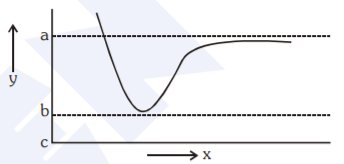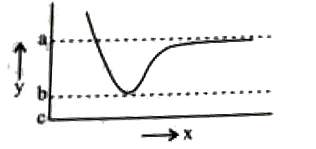The potential energy(y) curve for H2 formation as a function of inrtnuclear distance(x) of the H atoms is shown below

The bond energy of H2 is :
b−a
c−a2
b−a2
c-a
The correct Answer is:A
Step by step video, text & image solution for The potential energy(y) curve for H_2 formation as a function of inrtnuclear distance(x) of the H atoms is shown below The bond energy of H_2 is : by Chemistry experts to help you in doubts & scoring excellent marks in Class 12 exams.
Topper's Solved these Questions
Similar Questions
Knowledge Check
- Question 1 - Select One
The potential energy(y) curve for H2 formation as a function of inrtnuclear distance(x) of the H atoms is shown below

The bond energy of H2 is :A(c−a)2B(b−a)2C(c−a)D(b−a) - Question 2 - Select One
The potential energy (y) curve for H2 formation as a function of internuclear distance (x) of the H atoms is shown below.

The bond energy of H2 isA(c−a)2B(b−a)2C(c−a)D(b−a) - Question 3 - Select One
In the potential energy curve for the formation of H2 molecule as a function of internuclear distance of H atoms, what happens at the minimum in the curve?
Anet force of attraction equals to of force repulsionBmost stable state of H2 is achievedCsystem aquires minimum energyDAll of these
H2(g)=2H(g),ΔH=104.2kcal. The bond energy of H-Hbond is
View SolutionEnergy required to dissociate 4g of gaseous hydrogen into free gaseous atoms is 208Kcal at 25∘C
The bond energy of H−H bond will beView SolutionEnergy required to dissociate 4g of gaseous hydrogen into free gaseous atoms is 208Kcal at 25∘C
The bond energy of H−H bond will beView SolutionEnergy requried to dissociate 4 g of gaseous hydrogen into free gaseous atoms is 208 kcal at 25∘C. The bond energy of H-H will be
View SolutionEnergy required to dissociate 4g of gaseous hydrogen into free gaseous atoms is 208Kcal at 25∘C
The bond energy of H−H bond will beView Solution

